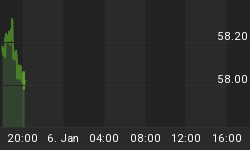The U.S. may be looking at a second round of tax cuts, or Trump may be playing fast and loose with his comments at a time when Republicans are trying to secure a key vote in Pennsylvania.
No one’s sure.
On Monday, Trump said he wanted a “phase two” of tax cuts, and it wasn’t the first time it’s come up.
Speaking at a gathering at the White House with the World Series champion Houston Astros, Trump’s banter with Rep. Kevin Brady (R-Texas), went like this:
"Kevin, are we going for an additional tax cut, I understand?" Trump asked, drawing laughter from those gathered for the event. "Huh? He's the king of those tax cuts, yeah? We're going to do a phase two, I'm hearing that. You hear that, John and Ted? Phase two. We're actually very serious about that, Kevin. So, it's good."
The statement sparked a flurry of media speculation, but not real follow-up on an official level (even on Twitter).
The original tax cuts passed in December cut the corporate tax rate to 21 percent. It also includes 10 years of income tax cuts that are designed to lower tax bills for a majority of Americans—a plan that adds $1.5 trillion to the nation’s budget deficit.
It was done in a bit of a rush, and there has been criticism about glitches and loopholes that might require further revision. It also sounded alarm bells about growing budget deficits. It’s hard to spend more and tax less.
So what might a “phase two” tax cut look like, and who would it benefit?
Would it be just a revision of the glitches and loopholes in ‘Phase I’, or would it go beyond?
In February, Brady himself noted the potential for more improvements to the tax code on capital gains, pension reform and employee ownership, among other things. There were no more details, and haven’t been since.
Related: Amazon’s Bid For A Monopoly On Everything
At the time, Brady said: "We're not waiting 31 years to do tax reform again.”
Today is the litmus test for the December tax cuts, in the form of the special election for Pennsylvania’s 18th Congressional District.
This vote will largely define how the wider public views the tax cuts, and it’s a barometer of Trump’s rule.
The vote will choose a replacement for former Rep Tim Murphy, a Republican, who resigned over a personal scandal. It’s a Republican district, and if moderate Democrat Conor Lamb beats Republican lawmaker and Trump ally Rick Saccone, it will be a major blow for the White House.
Final results are expected around 8:20pm EST.
It’s a vote the Republicans desperately want to win—and they thought they would win it on tax cuts--but so far voters haven’t been as enthusiastic as hoped.
It may be too early for anyone to really see gains from the tax cuts, but publics are notoriously impatient, and polls aren’t definitive barometers. A poll last week conducted by Quinnipiac University found that 36 percent of voters supported the tax cuts, while 50 percent opposed them. Other polls have demonstrated a slightly narrower divergence.
By Fred Dunkley for Safehaven.com
More Top Reads From Safehaven.com:

















